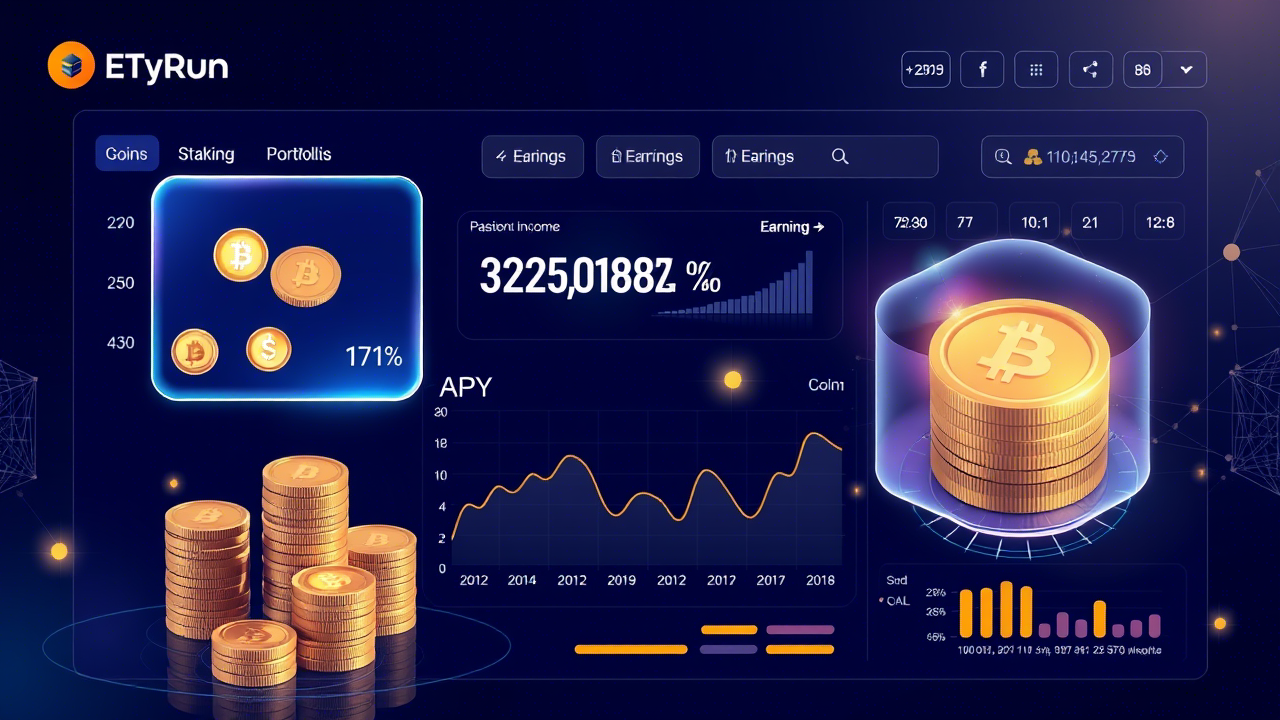The crypto market has changed drastically, and strategies that worked in 2024 may lead to losses today. After watching countless traders lose their savings with outdated methods, I’ve realized that successful crypto trading strategies in 2025 require a completely different mindset and approach. The volatility that once made crypto trading seem like easy money has become more sophisticated, with institutional players and AI algorithms dominating the space. Yet, profitable opportunities still exist for those who understand the new landscape and apply proven strategies with discipline and proper risk management.
Understanding Modern Crypto Trading Fundamentals
The Shift from Speculation to Strategy
Gone are the days when you could throw money at any cryptocurrency and expect massive returns. Today’s successful crypto trading strategies focus on systematic approaches rather than emotional decisions. The market has matured, bringing both challenges and opportunities for informed traders. Professional traders now rely on technical analysis, fundamental research, and risk management principles that mirror traditional financial markets. However, crypto’s unique characteristics still offer advantages that don’t exist in conventional trading.
Market Structure Changes in 2025
The cryptocurrency ecosystem has transformed significantly. Regulatory clarity has improved market stability, while institutional adoption has reduced extreme volatility. These changes mean that sustainable crypto trading strategies must account for: – Increased correlation with traditional markets during economic uncertainty – Lower but more predictable price movements – Greater importance of timing and precision – Enhanced role of on-chain data and sentiment analysis
Best Crypto Trading Strategies for Consistent Profits
Dollar-Cost Averaging with Tactical Adjustments
Dollar-cost averaging evolves with smart, tactical tweaks that adapt to current market conditions. Instead of blindly investing the same amount weekly, successful traders modify their investment sizes based on volatility and momentum indicators. During high volatility periods, increase your purchase frequency but reduce individual amounts. When markets show strong upward momentum with low volatility, consider slightly larger positions. This approach smooths out entry points while capitalizing on market inefficiencies. The key lies in maintaining discipline while allowing for minor strategic adjustments. Passive income ideas often incorporate this strategy as part of a broader investment portfolio.
Swing Trading with Support and Resistance
Swing trading is one of the most effective crypto strategies for part-time traders. This approach involves holding positions for several days to weeks, capturing medium-term price movements between key support and resistance levels. Successful swing traders use technical analysis to spot precise entry and exit points. They look for cryptocurrencies showing strong fundamentals but experiencing temporary price corrections. The strategy works particularly well with established cryptocurrencies that have predictable trading patterns. Risk management becomes crucial here. Never risk more than 2-3% of your total capital on any single trade and always set stop-loss orders before entering positions.
Scalping for Advanced Traders
Scalping aims for frequent small gains by taking advantage of tiny price shifts throughout the day. This strategy requires significant time commitment, quick decision-making, and strong emotional control. Modern scalping relies heavily on order book analysis and market microstructure understanding. Successful scalpers trade high-volume cryptocurrencies with tight spreads, often focusing on the same assets repeatedly to master their behavior. The strategy demands excellent timing and the ability to cut losses quickly. Most profitable scalpers use automated tools to execute trades faster than manual methods.
Technical Analysis Tools That Actually Work
Moving Average Convergence Divergence (MACD)
MACD remains one of the most reliable indicators for crypto trading strategies. It helps identify trend changes and momentum shifts, particularly effective in crypto markets due to their trending nature. The most effective strategy pairs MACD signals with volume analysis for better trade accuracy. When MACD shows bullish divergence while trading volume increases, it often indicates a strong upcoming price movement. Conversely, bearish divergence with falling volume often signals upcoming downward price pressure.
Relative Strength Index (RSI) with Modifications
Traditional RSI settings often generate false signals in crypto markets. Many successful traders use a 9-period RSI for short-term trades and a 21-period RSI for longer-term positions instead of the standard 14-period RSI. The key insight involves looking for RSI divergence rather than overbought/oversold levels alone. When price hits new highs but RSI forms lower highs, it usually warns of a possible correction.
Volume Profile Analysis
The volume profile highlights price levels with the most trading activity, revealing key support and resistance zones. This tool proves particularly valuable in crypto markets where traditional support/resistance levels may not hold due to the market’s relative immaturity. High-volume nodes tend to pull price back toward those levels. Low-volume nodes typically offer less resistance, allowing price to move through them more easily.
Risk Management Principles for Crypto Trading
Position Sizing Based on Volatility
Effective crypto trading strategies always incorporate dynamic position sizing. Instead of risking the same percentage on every trade, adjust your position size based on the asset’s recent volatility and your confidence level in the setup. For volatile altcoins, risk just 1-2% of your capital on each trade. For more stable cryptocurrencies like Bitcoin or Ethereum, you might increase this to 3-4% for high-confidence setups.
The 2% Rule with Crypto Modifications
The traditional 2% rule states that you should never risk more than 2% of your trading capital on any single trade. In crypto markets, this rule requires modification due to higher volatility and gap risk. Consider implementing a 1.5% maximum risk per trade for altcoins and 2.5% for major cryptocurrencies. This adjustment accounts for crypto’s tendency toward unexpected price movements while maintaining long-term capital preservation.
Correlation-Based Portfolio Management
Modern crypto trading strategies must account for increased correlation between different cryptocurrencies. During market stress, most cryptocurrencies move together, reducing the benefits of diversification. Track the correlation between your holdings and adjust your exposure as needed. When correlations spike above 0.8, consider reducing overall position sizes or focusing on non-correlated assets like certain DeFi tokens or sector-specific cryptocurrencies.
Psychological Aspects of Successful Crypto Trading
Overcoming FOMO and FUD
Fear of missing out (FOMO) and fear, uncertainty, and doubt (FUD) destroy more crypto trading accounts than poor technical analysis. Successful traders develop systematic approaches to combat these emotional challenges. Create predetermined entry and exit criteria for every trade before market emotions influence your decisions. When you feel strong FOMO, step away from the charts for at least 30 minutes before making any decisions.
Maintaining Discipline During Winning Streaks
Winning streaks often lead to overconfidence and increased risk-taking. The most successful crypto trading strategies include specific rules for maintaining discipline during profitable periods. Consider reducing position sizes after three consecutive winning trades, not increasing them. This counterintuitive approach protects profits while maintaining steady growth over time.
Learning from Losses
Every losing trade provides valuable information about market conditions and personal psychology. Maintain a detailed trading journal documenting not just what you traded, but why you entered and exited each position. Check your journal weekly to spot patterns in wins and losses. Often, the lessons from losses prove more valuable than celebrating wins.
Technology and Tools for Modern Crypto Trading
API Integration and Automated Strategies
Modern crypto trading strategies increasingly incorporate automation to remove emotional decision-making and execute trades faster than manual methods allow. Popular platforms like TradingView, 3Commas, and Cryptohopper offer user-friendly automation tools. Start with simple automated strategies like stop-loss orders and take-profit levels before progressing to more complex algorithmic approaches. Many successful traders use automation for entry and exit execution while maintaining manual oversight for strategy selection.
On-Chain Analysis Tools
Blockchain data offers unique insights not found in traditional markets. Tools like Glassnode, Santiment, and IntoTheBlock offer on-chain metrics that can enhance your trading decisions. Pay particular attention to whale wallet movements, exchange inflows/outflows, and network activity indicators. These metrics often provide early signals about upcoming price movements before they appear on price charts.
Social Sentiment Analysis
Crypto markets are strongly affected by social sentiment and news events. Tools that aggregate social media sentiment, news sentiment, and search trends can provide valuable context for your trading decisions. However, use sentiment analysis as confirmation rather than primary signals. The most profitable approach combines technical analysis with sentiment data to identify high-probability setups.
Common Mistakes That Destroy Trading Accounts
Overtrading and Chasing Markets
Crypto’s 24/7 trading often leads traders to stay active nonstop. Overtrading often results in higher costs, emotional burnout, and poor decisions. Successful crypto trading strategies focus on quality, not quantity. Wait for high-probability setups that meet your predetermined criteria rather than forcing trades when opportunities don’t exist.
Ignoring Tax Implications
Many crypto traders focus solely on gross profits while ignoring tax consequences. In India, cryptocurrency trading gains are subject to taxation, and poor record-keeping can lead to significant complications. Maintain detailed records of all transactions, including dates, amounts, and prices. Consider using specialized crypto tax software to track your obligations automatically. Financial planning should always include tax strategy considerations.
Lack of Diversification Strategy
While crypto trading can be profitable, putting all your investment capital into cryptocurrency trading creates unnecessary risk. Successful traders typically allocate only 10-20% of their total investment portfolio to active crypto trading. The remainder should be invested in more stable assets like safe investments with high returns or traditional investment vehicles.
Building Your Crypto Trading Plan
Setting Realistic Profit Targets
Many new traders enter crypto markets expecting unrealistic returns. While big profits are possible, sustainable crypto trading strategies prioritize steady, moderate gains over trying to get rich quickly. Aim for 15-25% annual returns from active trading, with potential for higher returns during exceptional market conditions. This approach allows for compound growth while maintaining realistic expectations.
Capital Allocation and Bankroll Management
Divide your crypto trading capital into specific categories: active trading funds, long-term holdings, and emergency reserves. Never use money you cannot afford to lose for crypto trading activities. A common allocation might be 50% for long-term holdings, 30% for active trading, and 20% in stable assets as dry powder for exceptional opportunities.
Continuous Learning and Adaptation
The crypto market evolves rapidly, requiring traders to continuously update their knowledge and strategies. Dedicate time weekly to learning about new developments, analyzing your trading performance, and refining your approach. Join reputable trading communities, read market analysis from multiple sources, and consider following successful traders who share their insights publicly. However, always verify information independently before acting on external advice.
Advanced Strategies for Experienced Traders
Arbitrage Opportunities
Price differences between exchanges create arbitrage opportunities, though these have become less common and more competitive. Modern arbitrage requires sophisticated tools and significant capital to be profitable after considering transaction costs and timing delays. Focus on cross-exchange arbitrage during high volatility periods when price differences are most pronounced. However, be aware of withdrawal limits, transfer times, and potential technical issues that could lock your capital.
Options and Derivatives Trading
Cryptocurrency options and futures provide additional tools for sophisticated trading strategies. These instruments allow for hedging existing positions, generating income through covered calls, or leveraging market movements with defined risk. Only experienced traders should consider derivatives trading, as the complexity and leverage involved can amplify both profits and losses significantly. Start with small positions to understand the mechanics before committing larger amounts.
DeFi Yield Farming Integration
Combining traditional trading with decentralized finance (DeFi) protocols can enhance overall returns. Some traders use stable cryptocurrency holdings to earn yield through lending protocols while maintaining trading positions with more volatile assets. Be aware of smart contract risks, impermanent loss in liquidity pools, and the complexity of managing multiple DeFi positions alongside active trading strategies.
Initiate your crypto trading journey with CoinDCX and win rewards up to ₹5,00,000 — Tap here to begin
Market Timing and Seasonal Patterns
Understanding Crypto Market Cycles
Cryptocurrency markets exhibit cyclical behavior related to Bitcoin halving events, regulatory announcements, and macroeconomic factors. Understanding these cycles can help you time your trades more effectively. Historically, crypto markets show strength in Q4 and weakness in summer months, though these patterns are not guaranteed to continue. Use seasonal analysis as one factor among many rather than the primary basis for trading decisions.
News and Event-Driven Trading
Regulatory announcements, technological upgrades, and major partnerships create trading opportunities for those who can react quickly and appropriately. Develop a system for monitoring important news sources and have predetermined responses to different types of events. However, be cautious of trading immediately on news, as initial market reactions often prove incorrect. Sometimes, the smartest move is to wait for the market to calm before entering trades.
Performance Measurement and Optimization
Tracking Key Performance Metrics
Successful crypto trading strategies require systematic performance measurement beyond simple profit and loss calculations. Track metrics like win rate, average win/loss ratio, maximum drawdown, and risk-adjusted returns. Use tools like Excel or specialized trading journals to maintain detailed records. Review your performance monthly to identify strengths and weaknesses in your approach.
Backtesting and Strategy Validation
Before implementing new crypto trading strategies with real money, test them against historical data to understand their potential performance and risk characteristics. Many trading platforms offer back testing capabilities, or you can use specialized software like TradingView’s strategy tester. Remember that back testing results don’t guarantee future performance, but they provide valuable insights into strategy behavior.
Continuous Strategy Refinement
Markets change, so winning trading strategies need to evolve too. Regularly review and refine your approaches based on changing market conditions, personal performance, and new available tools. Consider keeping multiple strategies in your toolkit, using different approaches for different market conditions. Diversifying boosts overall results and lessens the risk from any one strategy underperforming.
FAQ
What is the best crypto trading strategy for beginners to maximize profits?
Dollar-cost averaging with tactical adjustments offers the best balance of simplicity and profitability for new traders starting their crypto journey.
Can you really make $100 daily trading cryptocurrency?
While possible, expecting consistent daily profits of $100 requires significant capital and experience; focus on percentage returns rather than fixed amounts.
How much money do I need to start trading crypto?
Start with money you can afford to lose completely; ₹25,000-50,000 provides enough capital to learn proper risk management principles effectively.
Which crypto trading strategy has the highest success rate?
Swing trading combined with proper risk management historically shows the highest success rates among retail traders over extended periods.
How long does it take to learn profitable crypto trading?
Most successful traders spend 6-12 months learning basics, with true proficiency developing over 2-3 years of consistent practice and refinement.
What’s the biggest mistake new crypto traders make?
Overtrading and risking too much capital per trade destroys more accounts than poor technical analysis or market timing issues.
Should I use leverage for crypto trading?
Beginners should avoid leverage entirely; experienced traders might use minimal leverage only for high-confidence setups with strict risk management.
How do I know when to exit a losing crypto trade?
Set stop-loss orders before entering any position, typically 15-25% below entry price, and stick to predetermined exit rules regardless of emotions.
Final Thought
Success in crypto trading strategies requires patience, discipline, and continuous learning rather than quick-rich schemes or emotional decision-making. The most profitable approach combines solid technical analysis with excellent risk management and realistic expectations about market behavior. Remember that even the best crypto trading strategies will have losing periods. Focus on developing systems that protect your capital during difficult times while positioning you to capitalize on opportunities when they arise. Wealth management strategies should always include proper allocation to speculative investments like crypto trading. The cryptocurrency market offers incredible opportunities for those willing to approach it with professionalism and respect for its risks. Start small, learn continuously, and build your expertise gradually rather than trying to master everything immediately.












Leave a Reply